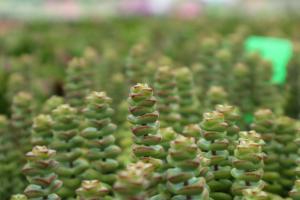Introduction
A rubber tree plant is a beautiful and hardy houseplant that is known for its glossy leaves and easy maintenance. However, like any other living thing, it is susceptible to diseases, pests, and environmental stressors that can cause it to start dying. If you notice that your rubber tree plant is looking unhealthy, don't despair. There are steps you can take to save your dying plant and restore it to health.
Assess the Situation
The first step in saving a dying rubber tree plant is to assess the situation. Look closely at the plant and check for any signs of problems. Does it have yellowing or dropping leaves? Are there bugs or insects on the plant? Is the soil too dry or too wet? Once you have identified the problem, you can take steps to fix it.
Adjust the Environment
Rubber tree plants thrive in bright, indirect sunlight. If your plant is not getting enough light, it can start to yellow and drop its leaves. Move the plant to a brighter location, or consider adding a grow light to provide it with the extra light it needs. Additionally, rubber tree plants prefer moist soil, but too much water can cause root rot. Make sure your plant is not sitting in water, and adjust your watering schedule to ensure the soil is damp but not saturated.
Combat Pests and Diseases
Rubber tree plants can be susceptible to pests such as spider mites, mealybugs, and scale. If you notice any of these pests on your plant, take action immediately. You can use insecticidal soap or neem oil to combat the pests, or you can try using a natural method such as wiping the leaves with a damp cloth. Additionally, rubber tree plants can be prone to fungal diseases such as leaf spot and crown rot. If you notice any signs of these diseases, remove the affected leaves or stems and apply a fungicide to the plant.
Prune and Propagate
If your rubber tree plant has become too leggy or overgrown, it may be time to prune it back. Use sterilized pruning shears to remove any dead or damaged leaves or branches, and cut back any stems that are growing too tall. You can also propagate your rubber tree plant by taking stem cuttings and rooting them in water or soil. This will allow you to grow a brand new plant from your existing one.
Conclusion
With a little care and attention, it is possible to save a dying rubber tree plant and bring it back to health. By assessing the situation, adjusting the environment, combating pests and diseases, and pruning and propagating, you can help your plant thrive and continue to bring beauty into your home for years to come.

 how many times do yo...
how many times do yo... how many planted tre...
how many planted tre... how many pine trees ...
how many pine trees ... how many pecan trees...
how many pecan trees... how many plants comp...
how many plants comp... how many plants can ...
how many plants can ... how many plants and ...
how many plants and ... how many pepper plan...
how many pepper plan...






























